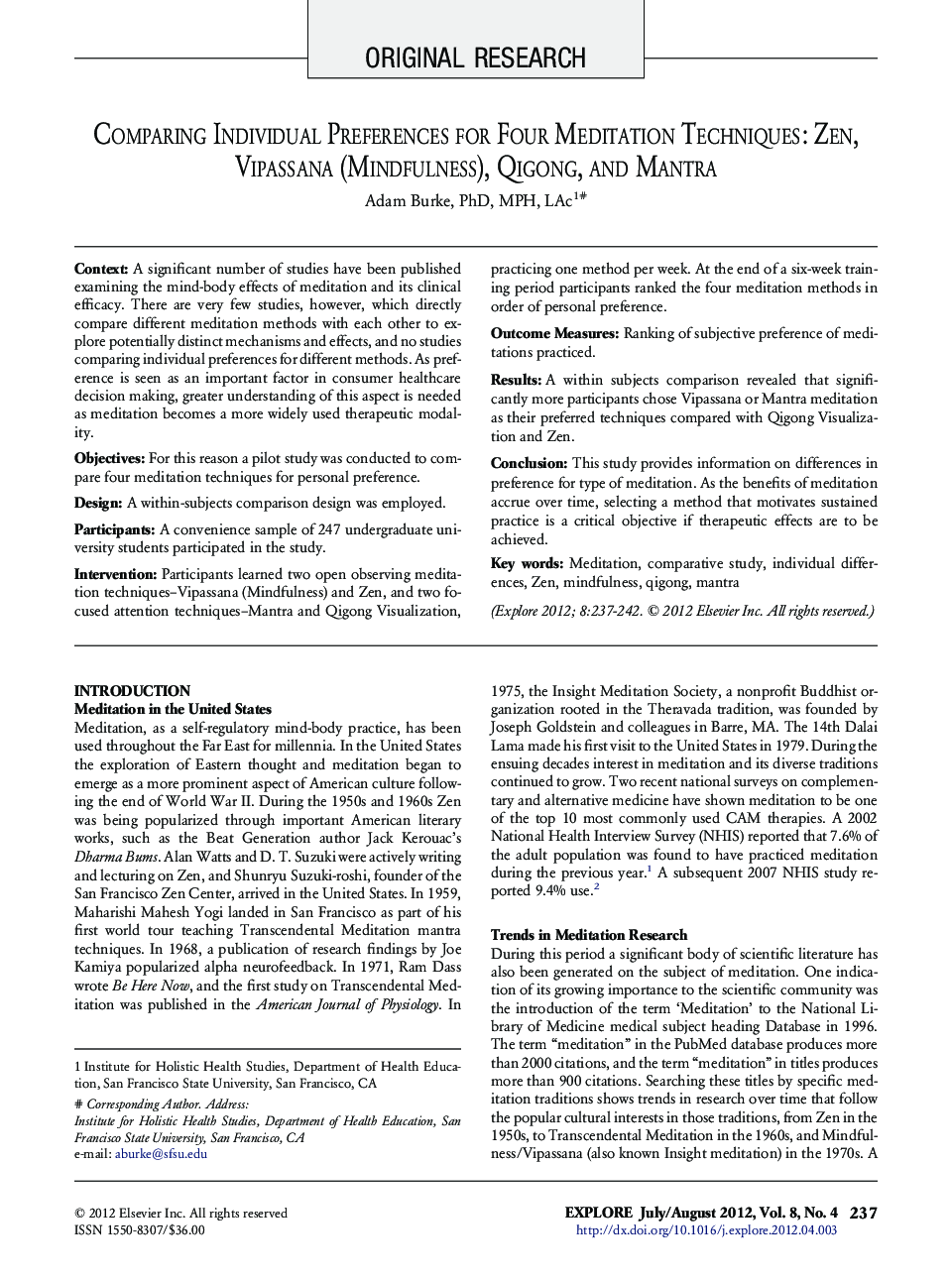| Article ID | Journal | Published Year | Pages | File Type |
|---|---|---|---|---|
| 2687566 | EXPLORE: The Journal of Science and Healing | 2012 | 6 Pages |
ContextA significant number of studies have been published examining the mind-body effects of meditation and its clinical efficacy. There are very few studies, however, which directly compare different meditation methods with each other to explore potentially distinct mechanisms and effects, and no studies comparing individual preferences for different methods. As preference is seen as an important factor in consumer healthcare decision making, greater understanding of this aspect is needed as meditation becomes a more widely used therapeutic modality.ObjectivesFor this reason a pilot study was conducted to compare four meditation techniques for personal preference.DesignA within-subjects comparison design was employed.ParticipantsA convenience sample of 247 undergraduate university students participated in the study.InterventionParticipants learned two open observing meditation techniques–Vipassana (Mindfulness) and Zen, and two focused attention techniques–Mantra and Qigong Visualization, practicing one method per week. At the end of a six-week training period participants ranked the four meditation methods in order of personal preference.Outcome MeasuresRanking of subjective preference of meditations practiced.ResultsA within subjects comparison revealed that significantly more participants chose Vipassana or Mantra meditation as their preferred techniques compared with Qigong Visualization and Zen.ConclusionThis study provides information on differences in preference for type of meditation. As the benefits of meditation accrue over time, selecting a method that motivates sustained practice is a critical objective if therapeutic effects are to be achieved.
